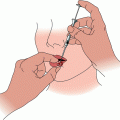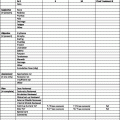Series
Number of patients
Follow-up
Previous treatment (%)
Surgery (%)
Radiotherapy (%)
Local control (interval)
Metastases (%)
MSKCC (3)
159
Median, 4.8 years
30
100
2
75 % (5 years)
1
MDAH (34)
122
Median, 47 months
29
100
16
64 % (5 years)
5
University of Illinois (2)
60
Median, 59 months
–
100
5
76 % (10 years)
–
University of Florida (4)
35
Mean, 58 months
49
100
11
91 %a
0
Mayo Clinic (12)
32
–
–
100
16
66 %a
6
CGMH (11)
34
Median, 50 months
12
100
29
45 % (7 years)
0
University of California, Davis (26)
24
Median, 4.5 years
54
100
4
100 %a
0
University of Heidelberg (28)
22
Mean, 54 months
41
100 (Mohs)
0
100 %a
–
University of Michigan (29)
62
Median, 4.4 years
–
100
3
100 %a
0
University of Miami, FL/NYU (30)
20
Mean, 56 months
–
100 (Mohs)
0
100 %a
–
Cai et al. reported on 260 patients treated for DSFP at Fudan University Shanghai Cancer Center between 1985 and 2006 [32]. Definitive wide excision was performed in 236 patients and 34 patients received postoperative RT. The total RT dose ranged from 33.75 to 73.50 Gy (mean, 57.87 Gy) at 1.8–2.5 Gy per fraction. Follow-up information was available for 31 (91 %) of 34 patients treated with RT. Median follow-up was 79.5 months (range, 24–221 months). Local control was achieved in 28 (90 %) of 31 patients.
Sun et al. [11] reported on 35 patients with DFSP treated at Chang Gung Memorial Hospital (Taiwan) with surgery alone (24 patients) or combined with RT (11 patients) between 1987 and 1998. Follow-up ranged from 11 to 131 months (median, 50 months). The median RT dose was 54 Gy (range, 46–68 Gy) administered at 1.8–2.5 Gy per fraction, 5 days a week. One patient with a 27 × 25 × 5 cm tumor who received preoperative RT and incomplete resection experienced local progression. The local control rates for the remaining 34 patients after surgery or surgery and RT were as follows: close or positive margins, 1 of 3 vs. 5 of 6; and negative margins, 14 of 21 (67 %) vs. 4 of 4. The 7-year local control rates were 28 % after surgery and 80 % after surgery and RT. No patient experienced a severe complication.
Ballo et al. [31] reported on 19 patients treated at the M. D. Anderson Cancer Center with RT alone (1 patient) or combined with surgery (18 patients) between 1972 and 1995 (Table 2). Patients had follow-up from 6 months to 23.5 years (median, 6 years). One patient had surgery and experienced a rapid recurrence; RT alone (65 Gy) was used to treat the gross disease and was unsuccessful. The patient subsequently died with disease 21 months after treatment. Two patients received preoperative RT (50 Gy) and surgery and both were locally controlled. Sixteen patients received surgery and postoperative RT (mean, 59 Gy; range, 50–66 Gy); margins were positive in 6 patients and negative in 10 patients. All remained locally controlled. No patient experienced a severe complication.
Table 2
Outcomes after radiotherapy alone or combined with surgery
Series | Number of patients | Follow-up | Previous treatment (%) | Surgical margins | Local control (interval) |
|---|---|---|---|---|---|
MGH (1) | 18 | – | 39 | Positive/close (83 %) Intralesional (17 %) | 88 % (10 years) |
MDACC (31) | 19 | Median, 6 years | – | Negative/positive (95 %) Intralesional (5 %) | 95 % (10 years) |
CGMH (11) | 10 | – | – | Positive/close (60 %) Negative (40 %) | 80 % (7 years) |
University of Florida (33) | 10 | 1.5–15.5 years | 50 | Negative (40 %) Close (<5 mm) (20 %) Positive (40 %) | 90 %a |






